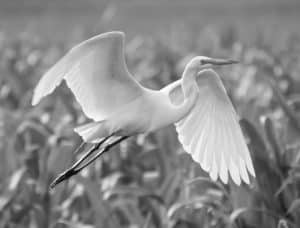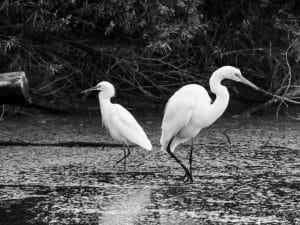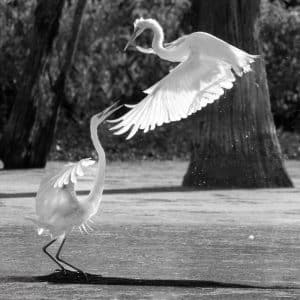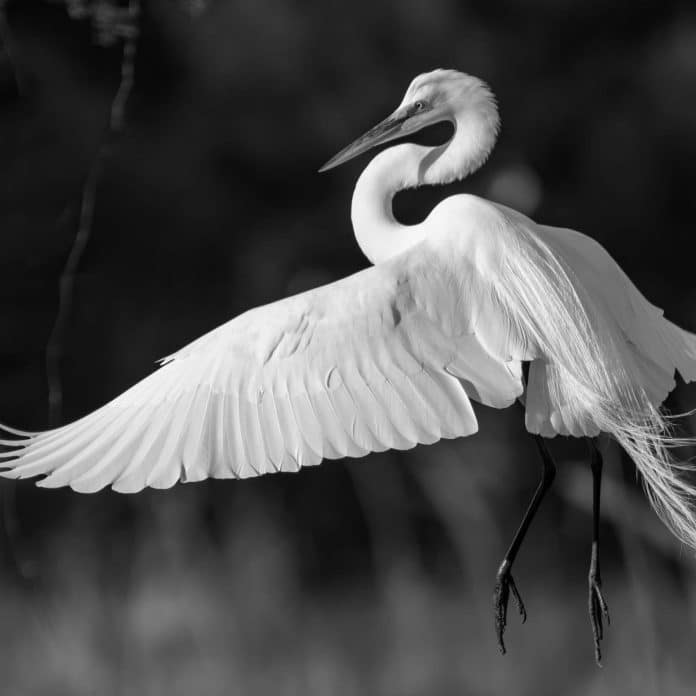Introduction to The Great Egret in Tanzania
The Great Egret in Tanzania, scientifically known as Ardea alba, is a majestic bird that belongs to the heron family, Ardeidae. With its impressive stature, striking white plumage, and graceful demeanor, the Great Egret is a captivating sight for bird enthusiasts and nature lovers alike. This magnificent bird is renowned for its elegant appearance and remarkable hunting prowess, making it a cherished symbol of natural beauty and resilience. Found in various wetland habitats across the globe, the Great Egret holds a special place in the hearts of wildlife enthusiasts, and Tanzania is no exception. The allure of witnessing the Great Egret in its natural habitat has drawn countless visitors to the breathtaking landscapes of Tanzania, offering an unparalleled safari experience for those seeking to immerse themselves in the wonders of nature.

The Great Egret’s enchanting presence is characterized by its long, slender neck, distinctive S-curved posture, and remarkable wingspan, which can reach up to 52-67 inches. Its pristine white plumage, accentuated by vibrant yellow bills and striking black legs, creates a captivating contrast against the lush greenery of its wetland habitats. The Great Egret’s regal appearance and graceful movements as it wades through shallow waters or soars across the skies exemplify the epitome of natural elegance. This iconic bird’s ethereal beauty and captivating presence make it a sought-after subject for wildlife photographers and birdwatchers, adding to the allure of exploring its native habitats in Tanzania.
Exploring the Habitat of the Great Egret in Tanzania
Tanzania, renowned for its diverse and pristine ecosystems, provides a sanctuary for the Great Egret within its rich wetland habitats. The country’s expansive network of national parks, game reserves, and wetlands offers a haven for an array of avian species, including the Great Egret. One of the most renowned locations for observing the Great Egret in Tanzania is the iconic Serengeti National Park, where vast savannahs and seasonal wetlands provide an ideal setting for encountering this magnificent bird in its natural environment. Additionally, the picturesque Lake Manyara, nestled at the base of the Great Rift Valley, serves as a vital habitat for the Great Egret, offering visitors an opportunity to witness its graceful presence amidst the tranquil waters and lush surroundings.
The Great Egret’s Behavior and Mating Rituals
In addition to its captivating appearance, the Great Egret’s behavior and mating rituals further enhance the allure of observing this magnificent bird in Tanzania. During the breeding season, which typically occurs from late winter to early spring, the Great Egret engages in elaborate courtship displays, marked by graceful aerial maneuvers, bill-clattering, and the construction of intricate nests in communal colonies. These mesmerizing rituals offer a glimpse into the complex and enchanting world of avian courtship, as the Great Egret showcases its dedication to finding a suitable mate and ensuring the survival of its offspring. The sight of these elegant birds engaged in their courtship behaviors amidst the pristine landscapes of Tanzania adds an extra layer of fascination for wildlife enthusiasts and birdwatchers seeking to witness the wonders of nature unfold before their eyes.
Conservation Efforts for the Great Egret in Tanzania

As a symbol of natural beauty and ecological balance, the Great Egret holds significant cultural and ecological importance in Tanzania. The conservation of its wetland habitats and the preservation of its natural behaviors are crucial for ensuring the continued thriving of this iconic species. Tanzania’s conservation initiatives, in collaboration with international organizations and local communities, are dedicated to safeguarding the Great Egret and its wetland habitats from the threats of habitat loss, pollution, and human disturbances. Through the establishment of protected areas, habitat restoration projects, and community-based conservation efforts, Tanzania is committed to preserving the Great Egret’s natural heritage for future generations, allowing visitors to continue experiencing the splendor of this magnificent bird in its unspoiled environment.
The Best Time to Observe the Great Egret in Tanzania
Timing plays a crucial role in maximizing the opportunities to observe the Great Egret in Tanzania’s diverse landscapes. The dry season, spanning from June to October, is an optimal period for wildlife enthusiasts to witness the Great Egret in its natural habitat. During this time, the receding waters in wetland areas concentrate fish and other aquatic prey, attracting an abundance of wading birds, including the Great Egret, to forage for sustenance. The clear skies and temperate weather of the dry season provide ideal conditions for exploring Tanzania’s national parks and wetlands, offering visitors an enhanced likelihood of encountering the Great Egret amidst the pristine natural settings. By planning their safari adventures during the dry season, nature lovers can elevate their experiences and relish the captivating presence of the Great Egret in its native environment.
Photography Tips for Capturing the Great Egret
For photography enthusiasts embarking on a safari to observe the Great Egret in Tanzania, mastering the art of capturing this magnificent bird in its natural habitat requires a blend of technical skills and an understanding of its behavior. Utilizing telephoto lenses and zoom capabilities can enable photographers to capture striking close-up shots of the Great Egret, showcasing its intricate plumage, expressive movements, and captivating presence with remarkable clarity. Patience and attentiveness are essential virtues when photographing the Great Egret, as these birds exhibit moments of graceful stillness and sudden bursts of activity while foraging or engaging in courtship rituals. By immersing themselves in the natural rhythms of the Great Egret’s behavior and leveraging the interplay of light and shadow, photographers can craft compelling visual narratives that convey the timeless elegance and innate beauty of this iconic bird within the enchanting landscapes of Tanzania.
Touring Tanzania: Top Destinations for Great Egret Sightings

Tanzania’s diverse array of natural attractions offers a multitude of opportunities for travelers to embark on unforgettable journeys in pursuit of encountering the Great Egret. The renowned Serengeti National Park, with its sweeping grasslands, acacia woodlands, and seasonal wetlands, stands as a premier destination for witnessing the Great Egret amidst the backdrop of timeless African panoramas. The expansive Lake Manyara, nestled within the Great Rift Valley, provides a picturesque setting for observing the Great Egret as it gracefully navigates the tranquil waters and verdant surroundings. Additionally, the enchanting Selous Game Reserve, characterized by its meandering rivers and diverse ecosystems, offers a captivating stage for encountering the Great Egret in the heart of Tanzania’s untamed wilderness. These extraordinary destinations provide a tapestry of natural wonders, inviting visitors to immerse themselves in the allure of the Great Egret’s habitat and embrace the serenity of the African wilderness.
Accommodations and Safari Packages for Great Egret Enthusiasts
When embarking on a safari adventure to witness the splendor of the Great Egret in Tanzania, securing comfortable accommodations and well-crafted safari packages is essential for enhancing the overall experience. Tanzania’s diverse range of lodges, luxury tented camps, and eco-friendly resorts cater to the needs of wildlife enthusiasts and nature lovers seeking to immerse themselves in the captivating landscapes that serve as the Great Egret’s habitat. From luxurious lodgings nestled amidst the pristine wilderness to exclusive safari packages tailored to showcase the marvels of Tanzania’s natural heritage, visitors have the opportunity to select accommodations and experiences that align with their preferences and desires. By choosing accommodations that offer proximity to the Great Egret’s habitats and safari packages that prioritize ethical wildlife encounters, travelers can elevate their safari experience and create lasting memories of their encounters with this iconic bird in Tanzania’s breathtaking natural settings.
Ethical Wildlife Tourism: Respecting the Great Egret’s Environment
As visitors embark on safari adventures to witness the Great Egret in Tanzania, it is imperative to uphold the principles of ethical wildlife tourism and prioritize the conservation of the bird’s natural environment. Respecting the Great Egret’s habitat, adhering to designated viewing guidelines, and minimizing disturbances to the bird’s behavior are essential practices for ensuring sustainable and responsible wildlife encounters. By supporting conservation-conscious tour operators, choosing accommodations with eco-friendly practices, and engaging in educational experiences that promote environmental stewardship, visitors can contribute to the preservation of the Great Egret’s habitat and the protection of its natural behaviors. Embracing the principles of ethical wildlife tourism not only enriches the safari experience but also fosters a deeper connection with the natural world, allowing travelers to appreciate the splendor of the Great Egret while contributing to its long-term conservation in Tanzania.
Conclusion: Embracing the Beauty of the Great Egret in Tanzania
In conclusion, the Great Egret’s presence in Tanzania’s diverse wetland habitats embodies the timeless allure of nature’s splendor and captures the hearts of wildlife enthusiasts and nature lovers from around the world. From its regal appearance and captivating behavior to the enchanting landscapes where it thrives, the Great Egret offers a gateway to the wonders of Tanzania’s natural heritage. By embracing the opportunity to observe this magnificent bird in its native environment, visitors can forge unforgettable connections with the captivating beauty of the Great Egret and immerse themselves in the serenity of Tanzania’s pristine wilderness. Through responsible and ethical wildlife encounters, coupled with a deep appreciation for the conservation of the Great Egret’s habitat, travelers can partake in a safari experience that transcends mere observation, allowing them to become stewards of the bird’s enduring legacy in Tanzania’s natural landscapes.

































